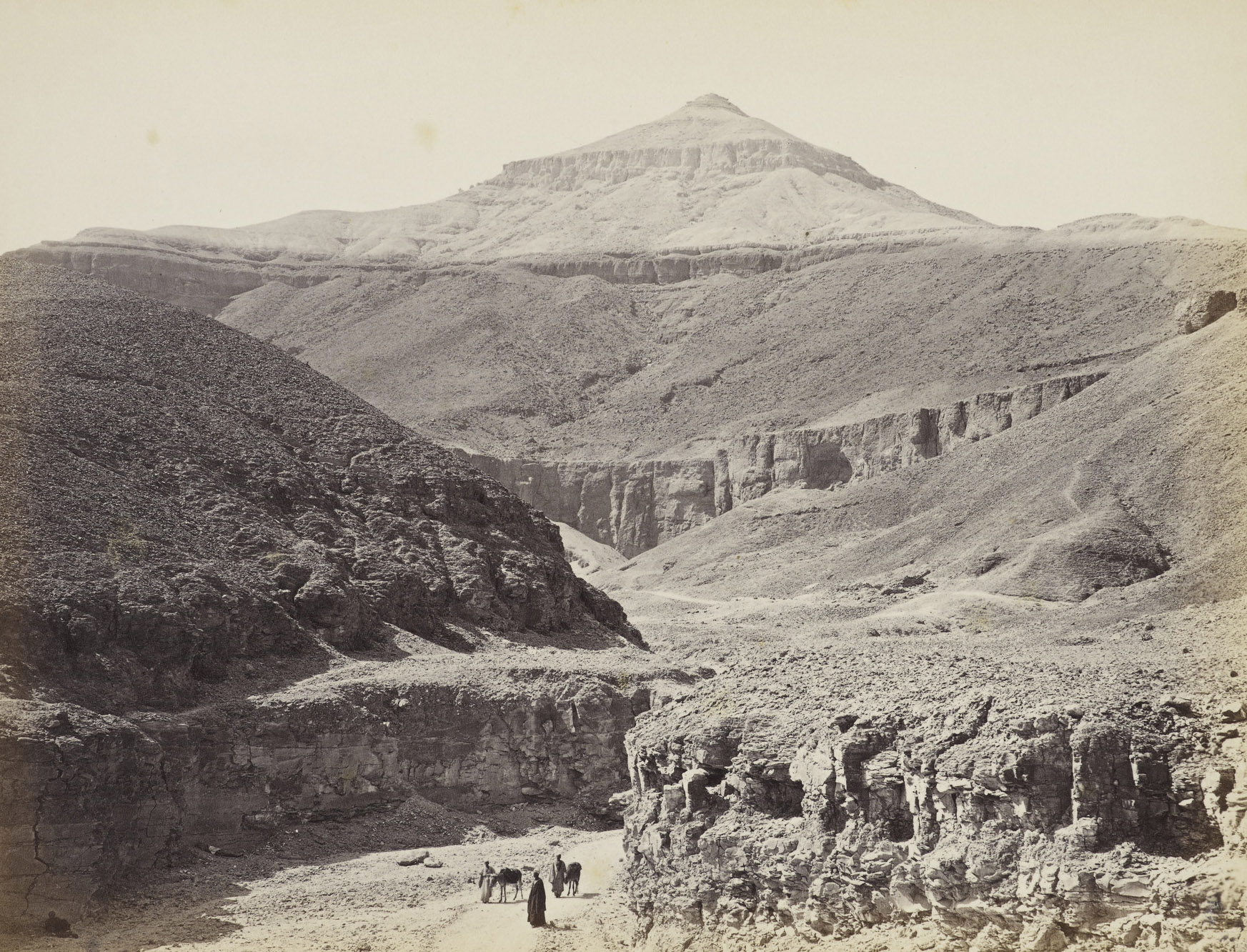Francis Frith1857-1859
The Head of the Valley
Albumen print16.3 x 21.0 cm (image)
The Royal CollectionRCIN 2701222
View along a path at the base of the Valley of the Kings. Rocky hills rising steeply on all sides, tall peak in distance, centre. Three local men with donkeys are in the foreground. The Valley of the Kings, which actually consists of two valleys, is a royal necropolis of the New Kingdom. The 63 tombs (58 of which are in the eastern valley) consist of a series of rock-cut chambers and corridors, sloping downwards into the cliffs, with their walls and ceilings often richly decorated by wall paintings. One of the finest tombs is probably the one belonging to Seti I (1294-1279 BC) but the tomb of Tutankhamun (1336-1327 BC), discovered by British archaeologist Howard Carter (1874-1939) in November 1922, is likely to be the most famous, due to the fact that it was found virtually undisturbed, providing a wealth of treasure. Al-Qurn, the peak visible in the distance, has a pyramid shaped appearance, remembrance of the pyramids of the Old Kingdom. It is thought that this, together with the fact that the valley enjoyed an isolated position with difficult access, may have played a part when chosen by kings of the XVIII Dynasty, the first possibly being Thutmose I (1504-1492 BC), as location for their tombs. The valley continued to provide resting places also for pharaohs of the XIX and XX Dynasties, the last being Rameses XI (1099-1069 BC).
LL/91236

